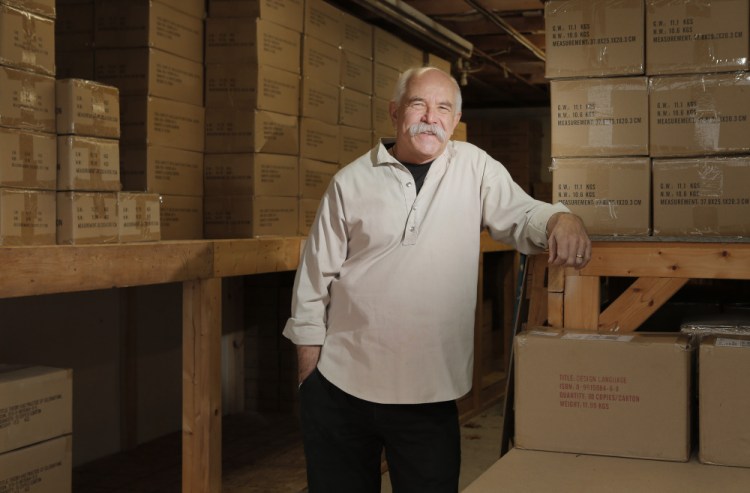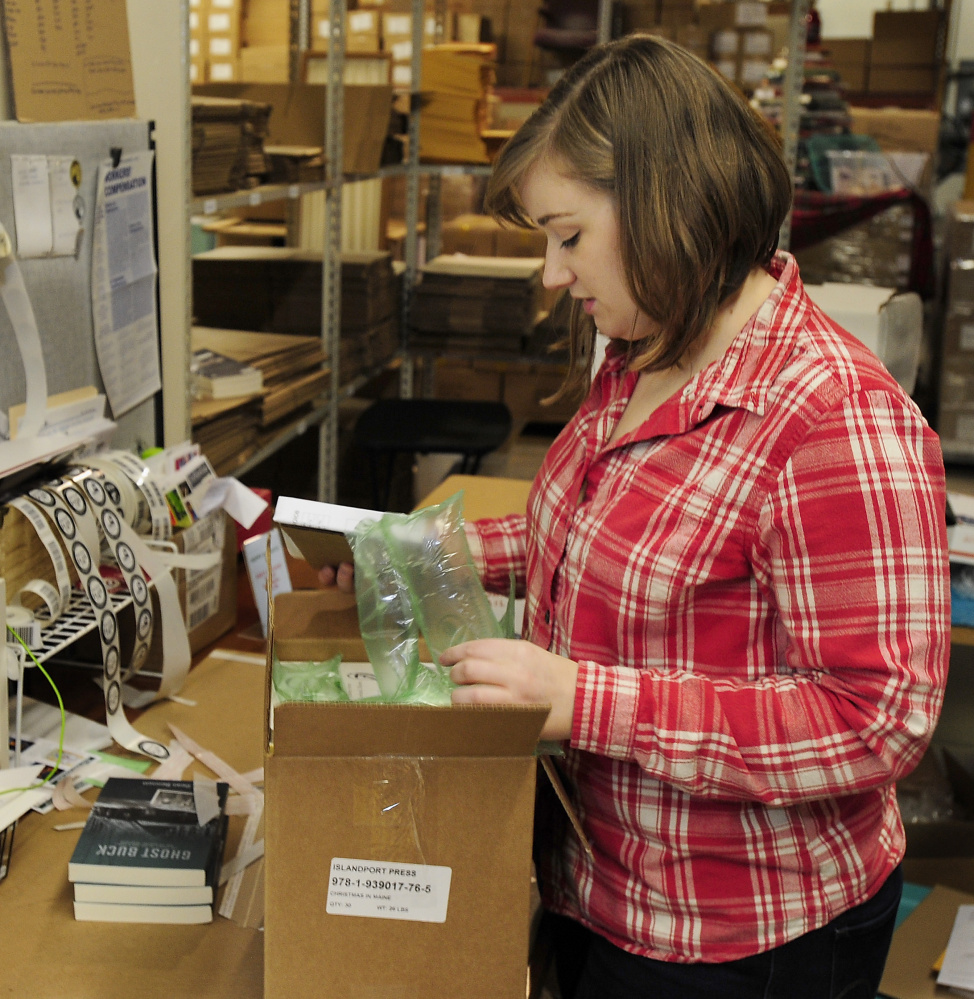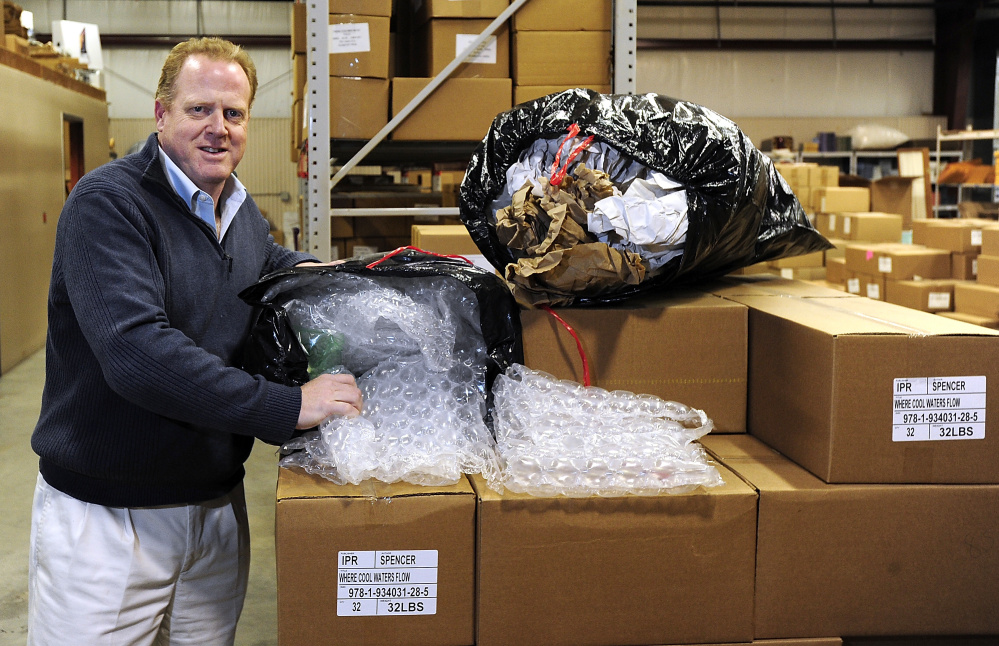The new cookbook you got for Christmas or Hanukkah might have been written in Manhattan, but there is a good chance it was printed in China. The paper in your pristine new copy of Jonathan Franzen’s “Purity” might have originated in a Canadian boreal forest, traveled to Michigan to be turned into a book and then bounced over to a warehouse in Maryland before making its way to a spot under your tree.
We all know reading is good for us, but is it green?
Every two years, a national group called the Book Industry Environmental Council surveys the industry to assess how much progress publishers, printers and paper manufacturers have made toward sustainability. It can’t be a fun survey for publishers to take. No matter how noble or important one believes the printed word to be, its production has traditionally been a dirty business, from chopping down trees to make paper to putting petroleum-based inks on that paper and then shuffling heavy cartons of bound books around the nation. Or as is often the case, the world.
But in recent years, thanks in no small part to the urging of a nonprofit called the Green Press Initiative that began advocating for better publishing practices in 2001, the bigger publishing houses have made efforts to clean up their businesses. In 2008, 250 publishers signed the Green Press Initiative’s Treatise on Environmentally Responsible Publishing, setting goals to increase the amount of recycled fiber, or post-consumer, paper they used from about 5 percent to 30 percent by 2012 as well as sourcing at least 20 percent of their paper from Forest Stewardship Council forests, where sustainable harvest practices are followed.
As a group, they fell short on the first goal, using about 20 percent recycled fibers, but exceeded the second. It’s progress, said Todd Pollak, project director for the Green Press Initiative.
‘EXTREMELY CARBON INTENSIVE’
When the group studied publishing’s carbon footprint in 2008, the largest impact on the environment was from the paper making, Pollak said. It starts with the sudden impact on the forest itself, but the manufacturing process entailed in turning wood into paper is the bigger culprit. “It is extremely carbon intensive,” Pollak said. “It is usually the second or third largest industrial source of carbon emissions for most developed countries. Paper uses a lot of energy to make.”
A few New England-based publishers are on the list of signatories to the Green Press Initiative’s treatise, including Vermont’s Chelsea Green. But none of the most familiar names in Maine-based publishing – Down East, Islandport or Tilbury – signed on.
In all likelihood that’s because for many, if not most of the nation’s smaller presses, the word sustainability is more about staying afloat in a tough business than being green.
“It is hard because small publishers have such a small profit margin already,” said Seattle-based Melissa Brumer, author of “Rethinking Paper & Ink: The Sustainable Publishing Revolution.” “Especially with Amazon having such a huge influence on how books are marketed and sold.”
AN UNAFFORDABLE LEAP
For instance, Tilbury Books in Thomaston would be happy to print on recycled paper. But it can’t afford to make that leap.
“Printing on recycled paper is an expensive proposition,” said Tristram Coburn, Tilbury’s co-publisher. “We look for opportunities to be as green as possible, but we don’t have the scale yet.”
Pollak said large publishing houses sometimes purchase their own paper, in bulk, getting a better price, and then ship it to the printer. Some printers keep recycled paper in stock and don’t charge a premium for it, but Pollak said there is simply a smaller supply of recycled paper on the marketplace now. Single-stream recycling makes it harder to reclaim paper products. Beyond that, because fewer newspapers, magazines and books are being published, there is less paper to recycle.
Tilbury would have to buck the system, the way Chelsea Green has done since its incorporation in 1984, and charge more. Margo Baldwin, Chelsea Green’s founder, said the company’s paperbacks, printed on recycled paper with soy inks, range from $18 to $25 compared to $15 to $17 for the usual paperback book. But customers are willing to pay the difference for products that reflect the publisher’s overall mission, which is specifically geared toward sustainability.
Even so Chelsea Green struggled initially.
“It was very iffy in the beginning,” Baldwin said.
EVERY LITTLE BIT COUNTS
But Maine publishers are making efforts to be more environmentally friendly, whether it be working solely with e-books or publishing print products on demand, buying carbon offset credits, printing small runs to start or sending out galleys to buyers and reviewers electronically instead of in printed versions.
Take Dean Lunt’s Islandport Press, now in its 16th year of business, with 100 books on its backlist and about 20 new books rolling off presses every year. Islandport prints domestically when it can to save on shipping costs. And the press warehouses its books in Yarmouth, which makes distribution greener for a company that sells about half its stock within Maine, including at their biggest in-state customer, L.L. Bean.
Islandport’s quirkiest – and most endearing – sustainable practice started when an Islandport staffer who was doing the neighborly thing by dropping off a book order at Gulf of Maine Books in Brunswick on her way home noticed how much packing material store co-owner Beth Leonard had piled up the back room. Every time a distributor sent books, Leonard saved the boxes and materials they came in.
“Once we filled up the back room, I just want to get rid of it but I don’t want to throw it out,” Leonard said. Gulf of Maine wanted it gone and Islandport needed packing material for its orders; collaborative recycling was born. The swapping arrangement is now a decade old.
“Often we have 12 or 15 large garbage bags that we are getting from Gulf of Maine,” Lunt said.
MADE IN CHINA
Today’s tight publishing budgets mean that most books that involve a lot of color, like those charming children’s books Islandport or Tilbury are known for, are printed in Asia, including China, South Korea, Hong Kong and Indonesia. It’s consistently cheaper, even when you factor in shipping.
“It’s the color printing where there is a huge price difference,” Pollak said. He estimated that 20 percent of books for the American market are printed in Asia. From the Green Press Initiative’s perspective, this is troubling because there is minimal oversight over where the paper comes from. Presses in Indonesia are particularly suspect for using illegally sourced fibers, including those coming from critical ecological areas. China also offers fewer options for recycled paper products. “We don’t necessarily say ‘Don’t print in Asia’ but the same things we encourage publishers to do when they are printing in the U.S. is definitely something we would encourage them to do in Asia,” Pollak said. That might include asking for vegetable-based inks, recycled paper or certification that the paper comes from sustainably harvested wood.
Coburn, co-publisher of Tilbury, said the small press’ adult narrative nonfiction books are printed in the United States, including in Ohio and Pennsylvania. But when it comes to the four-color printing process involved with children’s books, they go to the Far East.
“We would rather print domestically, but right now the difference is upward of a dollar a book, even with shippping,” Coburn said.
Tim McCreight runs Brynmorgen Press in Brunswick, which carries a back list of roughly 25 specialty books about crafts (titles include “Creative Metal Forming” or “Custom Knifemaking”). He’s small scale, selling about 1,800 books a month.
“I either print overseas or I don’t do it at all,” McCreight said.
Most of his business is in print books, all of which are printed on high quality glossy paper and contain many color images. His prices aren’t low (some books cost around $45), but he just couldn’t make it using domestic presses.
CARBON OFFSETS
But McCreight does what he can to be green. That includes “pestering” his supplier to use soy inks. And probing enough about his printer’s practices to be told that former Vice President Al Gore, he of “An Inconvenient Truth,” uses the same press he does, which McCreight thought was a pretty good sign. Still, he wanted to do more. “I buy carbon offsets because I know those books have to get here by trucks (and ships),” McCreight said. “I pay $375 a year.”
“I am trying to be a good citizen,” he said. “That is why I looked into this. I sleep at night, you know?”
McCreight is also a big believer in going digital wherever possible. A number of his titles are available for iPad downloads, although he’s found print to be more popular.”I have been pushing digital books pretty aggressively,” he said. “There’s a lot of benefit there.” But he found that even his friends who use their iPads constantly don’t tend to read on the device.
Industry experts say that the use of e-books has plateaued after an initial wave of interest. But they have made a sizable dent in the sheer volume of paper used by the publishing industry. In 2006 publishers used an estimated 1.6 million tons of book paper. By 2014 the estimated consumption had dropped 40 percent, to 956,000 tons. Other factors could have contributed to that drop, including the recession and the overall decline of the industry, but the consensus is the sudden popularity of e-readers was a key factor.
VIRTUAL OR REALITY?
Chances are if you’ve been in a bookstore lately you’ve heard the argument. Two people shopping, the first making a list to send to his or her e-reader. the second picking up actual books. “I can’t stand the waste of all that paper,” the first person says. “But I like the feeling of turning the pages,” the second says. One thinks he’s a champion of the environment. The other privately thinks she’s more of a true book lover and this e-book fad will pass.
It’s unclear who would be right.
Caleb Mason is putting his money on the e-book. He founded his Portland-based e-book publishing company Publerati in 2011. A veteran of traditional presses such as Little Brown, Mason opened his own house with a plan to specialize in literary fiction that falls in the mid-list category, that is, would likely never be a bestseller but might sell 10,000 copies. He doesn’t believe every book deserves a print run, especially given how many end up in remainder bins or scrapped and pulped. “It is just this enormous amount of waste,” Mason said.
Or it was. Maine publishers are, like their national counterparts, simply printing fewer copies of their books in today’s economy. It’s a green practice with a financial benefit. Tilbury used to do print runs of 5,000 regularly. “Now 1,500 to 3,000 is probably the max we’ll do,” said Coburn. His philosophy is it is far better to go back for a second or third run than face stacks of unwanted books in the warehouse.
To those who want something to put on their shelves, Publerati’s Mason suggests a new approach. Read the book electronically and if you must have a paper copy for posterity, use a new print-on-demand service called Espresso Book Machine, which produces a book in minutes. Only about 100 of these machines exist in the country and Maine has one of them, housed at the Books a Million in South Portland. All of Publerati’s titles are available within the Espresso network.
“It’s incredible,” Mason said. “It’s like a salt water taffy machine.”
Mason took the pro side in a debate hosted earlier this month when the Maine Writers and Publishers Alliance sponsored a debate around this statement: “E-books will eventually supplant printed books entirely.”
His viewpoint was not the popular one, unsurprisingly, but he said he felt good about converting “about eight” people.
IS ELECTRONIC BETTER?
But even Mason knows that electronic reading devices, whether they be phones, Kindles, Nooks or tablets, are not particularly green. Consider the unhappy working conditions in some factories, the minerals needed to make the devices and, eventually, battery disposal and electronic (and often toxic) waste.
“It is not as if they disappear into fairy dust,” Islandport’s Dean Lunt said.
Pollak of the Green Press Initiative said his group has done a comparison and determined that an e-book’s environmental value depends on its user’s reading pattern. People who buy Kindles and use them to read three to eight books a year are not doing much in the way of decreasing their carbon footprint. But if someone reads 50 books a year on a Kindle and manages to keep it going for 10 years (fat chance, given the durability and pace of new technologies), yes, she should be greener than a traditional book buyer with the same voracious reading appetites.
The publisher catering to that kind of reader would also be doing well in a financial sense.
“If I could sell nothing but e-books, the margin is superb,” Coburn said. “It’s a one-time conversion cost and you have no warehousing costs.”
But he points to studies that most readers say they prefer a print product to e-books, even if both have room for improvement.
“I would rather have discarded books around than discarded electronics,” Coburn added.
For an environmentally oriented publisher like Chelsea Green’s Margo Baldwin, the new frontier is less likely to be electronic than new papers made from grass clippings, hemp or some other fiber-producing plant.
“We just need to move away from using trees,” she said.
Whatever their stance on materials and waste, publishers and advocates for greener publishing are in agreement on one thing: the value of reading, for education, pleasure and bringing people together.
“To me the bottom line is environmental sustainability is important for sure,” said Brumer, the author of “Rethinking Paper & Ink: The Sustainable Publishing Revolution.” But she values the educational and cultural value of books too much to decree them unsustainable.
“What would a completely sustainable publisher look like?” she added. “Is that even possible? Maybe it is not, and we just have to do the best we can and choose what you are willing to compromise on. You have to choose the lesser evil.”
Send questions/comments to the editors.





